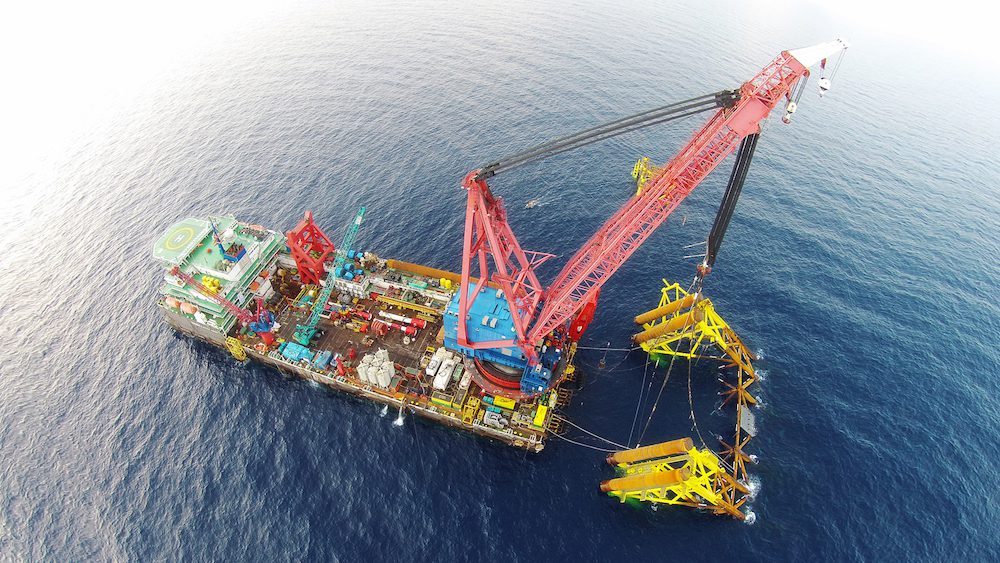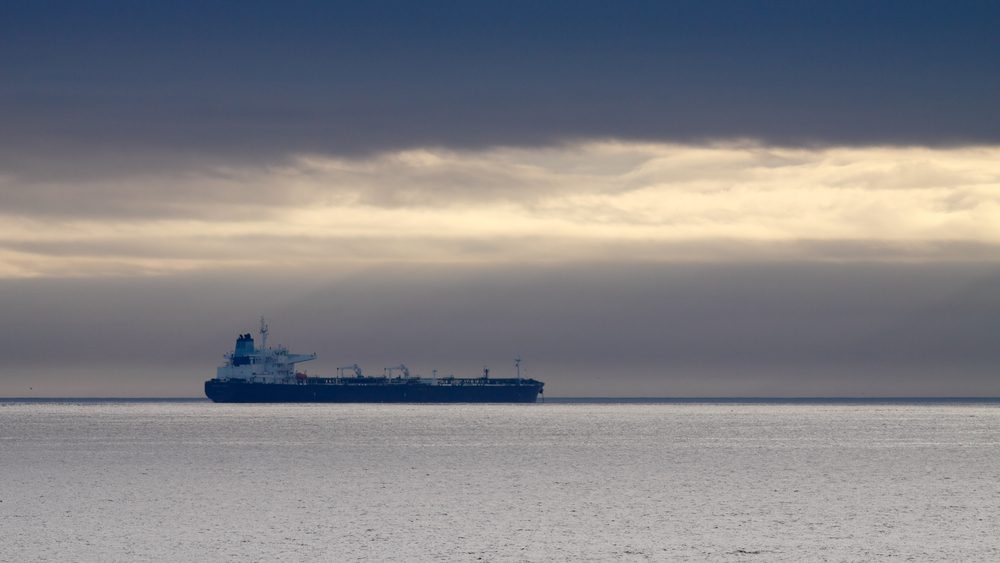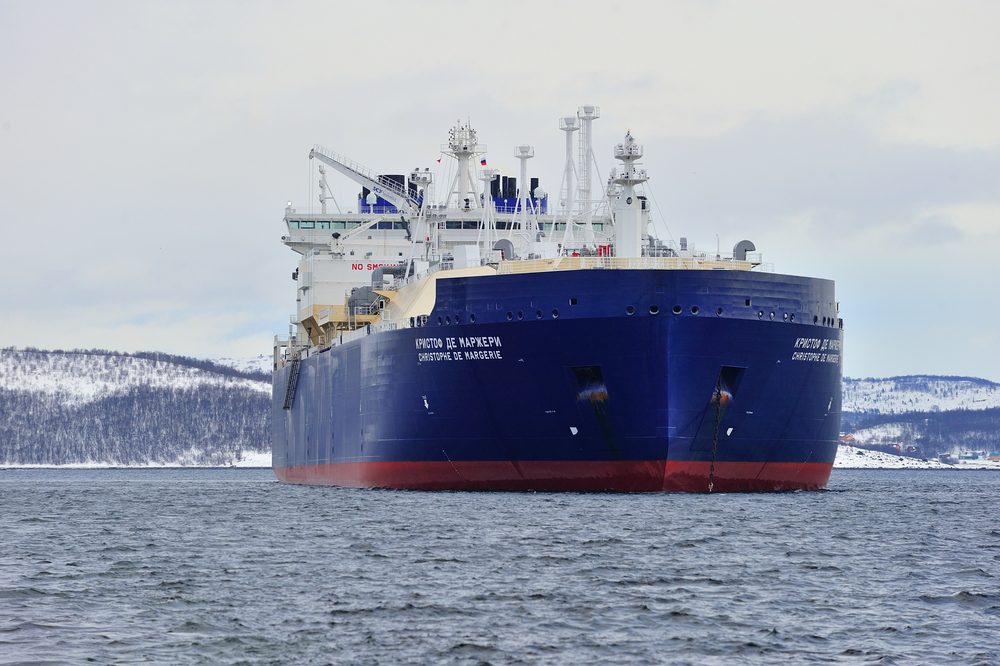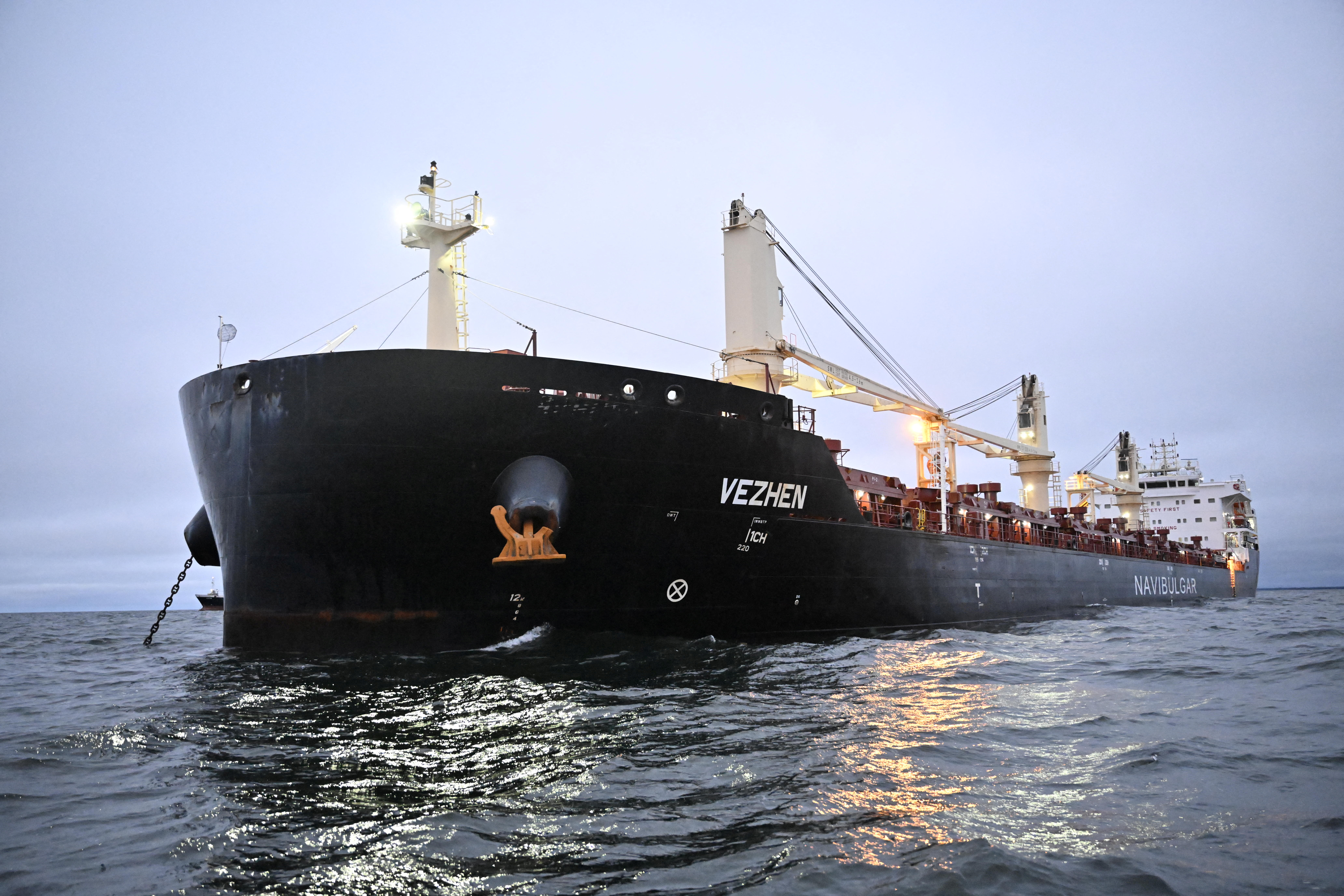Photo credit: Swiber Offshore
By Kyunghee Park and Chanyaporn Chanjaroen
(Bloomberg) — With a market value of S$50 million ($37 million), Swiber Holdings Ltd. hardly seemed the kind of company to cause a ripple in the financial markets. Yet, the near-liquidation of the penny-stock firm has set off tremors in Singapore’s banking and energy industries.
The Singapore-based supplier to offshore oil and gas explorers, facing about $50.5 million of demands last month from various creditors, said July 29 that it seeks to operate under court supervision as it attempts to turn around its business. Two days earlier, it had filed a petition for liquidation, which was subsequently dropped following talks with lenders.
While Swiber is the latest victim of the collapse in crude prices, the spending cuts by explorers such as Royal Dutch Shell Plc and Statoil ASA are testing Singapore’s position as a hub for the marine and offshore industry that accounted for 6.9 percent of the city-state’s manufacturing output in 2015. The rut is also hurting the nation’s lenders including DBS Group Holdings Ltd., which said it may recover only half of its exposure of about S$700 million to Swiber and its units.
“The sector has been a drag on the overall gross domestic product,” said Song Seng Wun, an economist at CIMB Private Banking in Singapore. “The period of downturn could last longer. There will be pressure on all the players — large and small.”
As a global financial hub, Singapore provides for 25 percent to 35 percent of commodities trading in Asia, according to International Enterprise Singapore, a government agency. It is also Asia’s largest physical oil trading hub. Additionally, it is home to the world’s largest bunkering port.
Singapore’s marine and offshore industry, which includes the world’s two biggest oil rig builders Keppel Corp. and Sembcorp Marine Ltd., provides for 19 percent of the island-nation’s manufacturing jobs. The halving of Brent crude prices in the past two years is posing a risk to the sector and the country’s economy, which is estimated to expand 1.8 percent this year, the slowest pace in seven years, according to a Bloomberg survey.
The marine and offshore industries in Singapore aren’t alone in facing challenges. Their counterparts in South Korea are undergoing restructuring after posting losses last year spurred by delivery delays. State-owned Korea Development Bank led other creditors to push shipyards to draw up aggressive measures to raise funds, cut capacity and jobs.
Singapore’s Straits Times Index has fallen 2.4 percent since Swiber’s woes were made public. The FTSE Straits Times Oil & Gas Index, which tracks the marine and offshore engineering companies, dropped 5.4 percent during the same period, while Ezra Holdings Ltd. slumped 18 percent and Ezion Holdings Ltd. slid 10 percent.
Swiber’s shares plunged to 10.9 Singapore cents before trading was suspended on July 28, from as high as 88.4 Singapore cents about two years ago.
For the financial industry, Swiber’s distress augurs more trouble.
DBS, which provided a bridging loan to Swiber before the liquidation filing, has the biggest exposure to the troubled firm among Singapore’s banks, according to court documents.
The bank’s exposure to Swiber amounted to S$721 million, according to a presentation accompanying its results Monday. Of that total, S$403 million was to finance working capital for two projects, S$197 million was for June and July bond redemptions, and S$121 million was for mainly secured term loans for vessels, property and hedging purposes. DBS said July 28 it only expects to recover about half of the exposure to Swiber. About S$300 million of those loans are secured by collateral, including property and vessels, according to the lender then.
Credit Negative
DBS’s specific allowances, or provisions for bad debts, rose to S$336 million in the June quarter, including S$150 million for Swiber, the bank said. Total allowances surged from S$132 million a year ago. The extra provisioning for Swiber would cut DBS’s 2016 earnings by 3 percent, Goldman Sachs Group Inc. said in a July 29 report.
“These developments are credit negative,” Moody’s Investors Service said Aug. 4, adding that the funds Singaporean banks are setting aside to cover souring energy exposures aren’t enough. “The substantial upward revision to DBS’ provisioning for its Swiber exposure is an indication that the current deterioration in the oil and gas industries could have a far stronger bottom line impact than previously expected.”
The bank’s common equity Tier 1 ratio stood at 14.2 percent in the second quarter, compared with 13.4 percent a year ago.
Books Healthy
Besides loans, Swiber defaulted on a S$150 million Islamic bond after notifying the stock exchange that it was unable to pay the coupon on the security due on Aug. 2. The non-payment caused a cross-default on the company’s four other outstanding notes, according to data compiled by Bloomberg.
Oil and gas-related loans accounted for 5.3 percent of gross lending by Singapore banks as of December, a higher proportion than at banks in South Korea, Thailand and the European Union, according to Moody’s. Of the 19 offshore service companies listed in Singapore, 10 companies recorded net losses in the first quarter, the rating agency has said.
“The whole sector is under stress,” DBS Chief Executive Officer Piyush Gupta told reporters in Singapore on Monday, referring to the oil & gas industry. “Many are having contract cancellations.” He earlier said in a statement that while there remains some uncertainty in the second half, DBS’ business momentum is good and its balance sheet is “healthy.”
Total Exposure
The exposures of Oversea-Chinese Banking Corp. and United Overseas Bank Ltd. to offshore marine services companies amounted to 13 percent to 18 percent of their common equity Tier 1 capital and loan-loss reserves at the end of June, Moody’s said in an Aug. 1 statement.
DBS’s total exposure to the oil and gas sector rose to S$23 billion, excluding Swiber, as of June, according to its presentation Monday. That’s compared with S$22 billion the previous quarter. In the oil support-services sector, the bank had a total exposure of S$7 billion to companies other than Swiber. Of that, S$2.3 billion was to five oil-services companies, one of which “has weakness,” the presentation said. Another S$2.7 billion was loaned to 90 companies, where one-third of the portfolio has weakness, according to the presentation. It didn’t identify the companies.
‘Harsh’ Winter
The Swiber case “may prompt banks to tighten lending to the sector,” said He Yuxuan, an analyst at Daiwa SB Investments (Singapore) Ltd. “If suppliers and other creditors cannot collect debts from Swiber, there may not be enough money to go down this chain.”
As lenders count their losses, the woes of the energy industry are far from over.
Keppel last month predicted a long, harsh “winter” in its rig-building business after reporting a 48 percent plunge in net income in the quarter through June. Smaller rival Sembcorp Marine said profit in the period tumbled 90 percent and warned that spending cuts in oil and gas will “continue to have a negative impact on the recovery process.”
“Highly geared companies exposed to oil and gas sector with weak cash flows would remain under pressure,” said Joel Ng, an analyst at KGI Fraser Securities Pte. in the city. “The pressure on bank stocks would also be significant and may lead to less support from lenders and shareholders for any fundraising in the future.”
© 2016 Bloomberg L.P

 Join The Club
Join The Club











